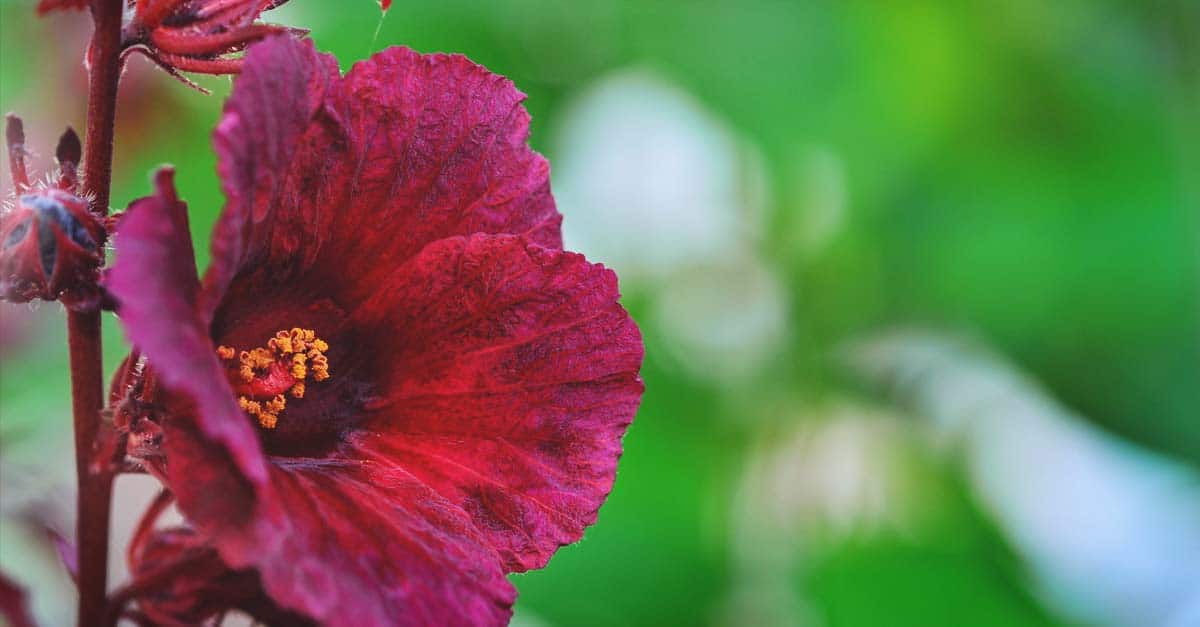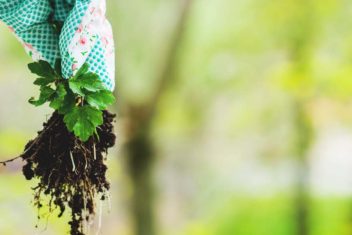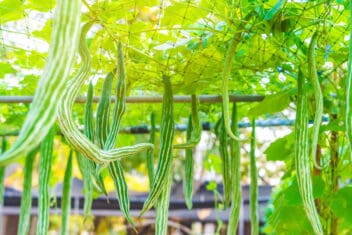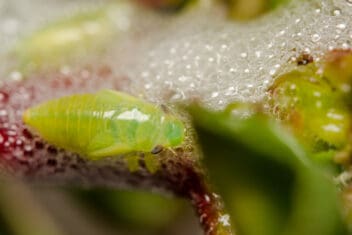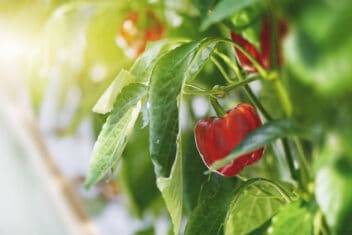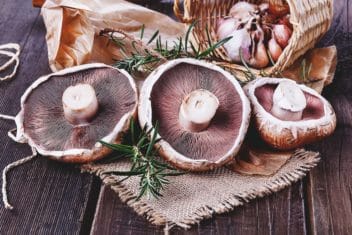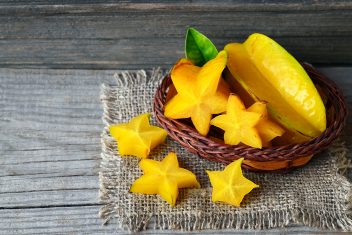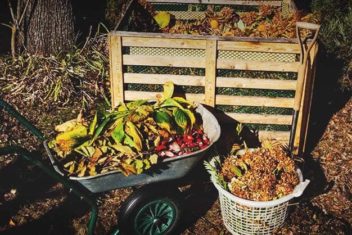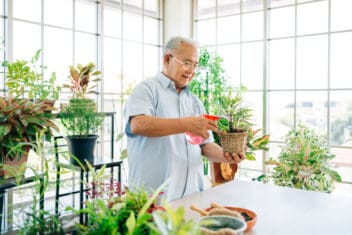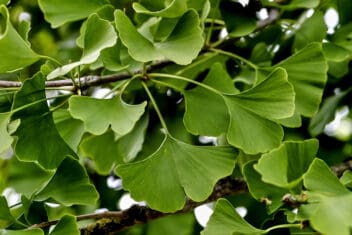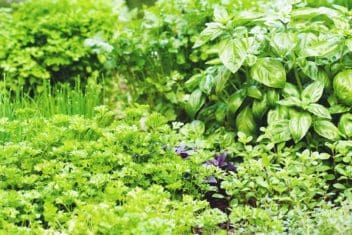I first started growing edible hibiscus a couple of years ago because I love hibiscus tea. There’s nothing like the distinctive, refreshing taste that comes from this tropical beauty. While I’d grow it just for a cup of tea, hibiscus has the added benefit of looking gorgeous in the garden.
Though I planted it for tea originally, I’ve since learned that hibiscus makes a delicious jelly or relish. You can add the calyx (the fruit), blossom and the leaf to salads. You can also use the plant medicinally for many conditions – not to mention the fact that it’s packed with nutrients.
The use of hibiscus as a food and medicine can be traced back to Roman times, and it has been used for hundreds of years as a tea in Asia and Africa. These days, this national flower of Haiti is eaten fresh and as a cranberry replacement. It’s also gaining recognition for its potential health benefits, such as its anti-inflammatory properties, its ability to aid in the improvement in blood circulation and for easing constipation.
On top of all that, its a beautiful plant. No doubt you’ve seen it featured on Hawaiian shirts and wall art. As if that’s not enough to recommend it, edible hibiscus is also one of the easiest plants I’ve ever grown.
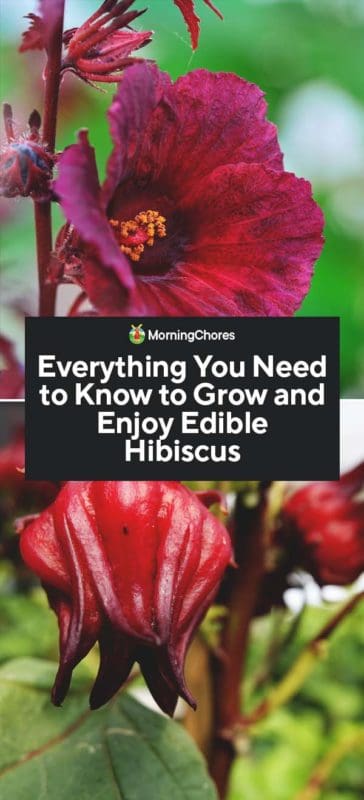
Edible vs Non-Edible Hibiscus
Not all varieties of hibiscus are edible, so ensure you’ve done your homework. There are hundreds of varieties and more are being bred all the time. Here are a few of my favorite options:
Jamaican Sorrel (Hibiscus Sabdariffa)
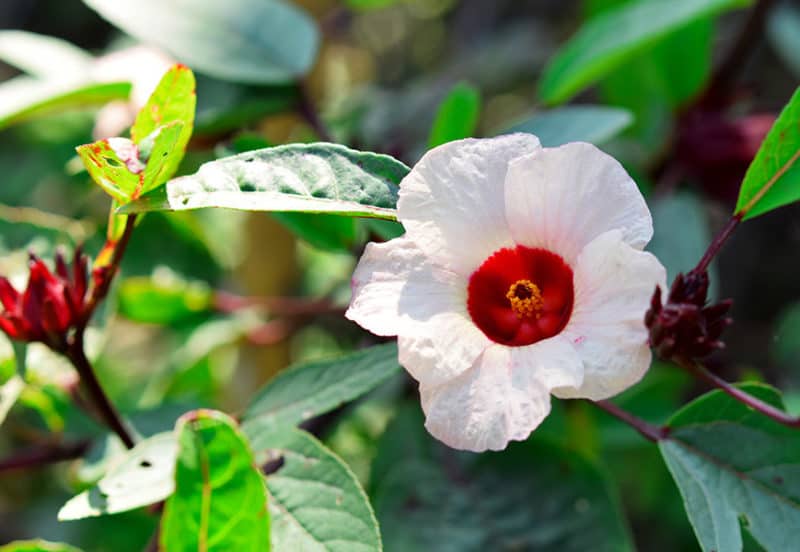
Also called Florida cranberry, this variety is tart and delicious and can be used as a cranberry substitute. It’s super simple to grow and you can eat the calyces fresh, frozen or dried.
The young leaves have a lemony flavor, which makes them perfect for salads or healthy snacking. My kids wander past and often grab a leaf or two for munching. Jamaican sorrel grows up to five feet tall.
Cranberry Hibiscus (Hibiscus acetosella)
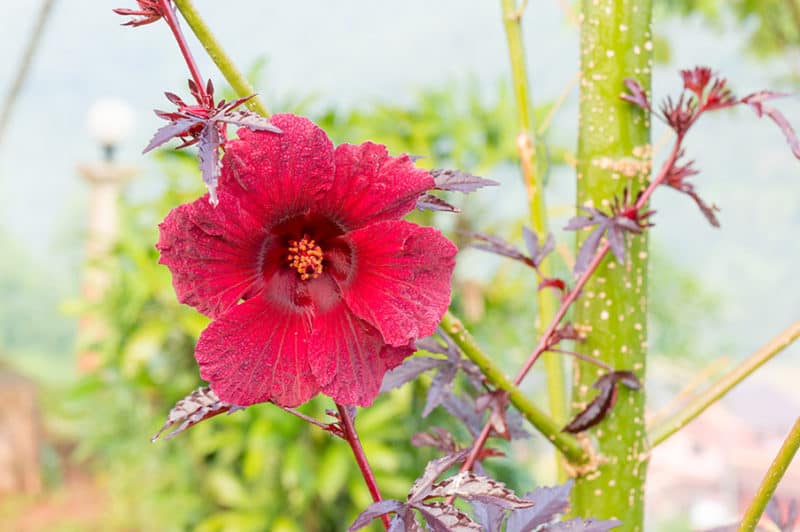
Even though the calyx isn’t edible on this variety, this is one of my favorite edible hibiscus varieties. The leaves are tart and lemony and are lovely in salads and stir-fries. Unlike many plants, cranberry hibiscus leaves retain their red color after being cooked.
The leaves resemble bright red maple leaves. Cranberry hibiscus sometimes grows enormous and needs to be controlled by pinching out the growing tips to encourage it to form a bush.
Don’t be put off by the slightly slimy leaves. The sliminess cooks off if you boil the leaves in small batches, and they taste lovely.
Edible Leaf Hibiscus (Abelmoschus manihot)
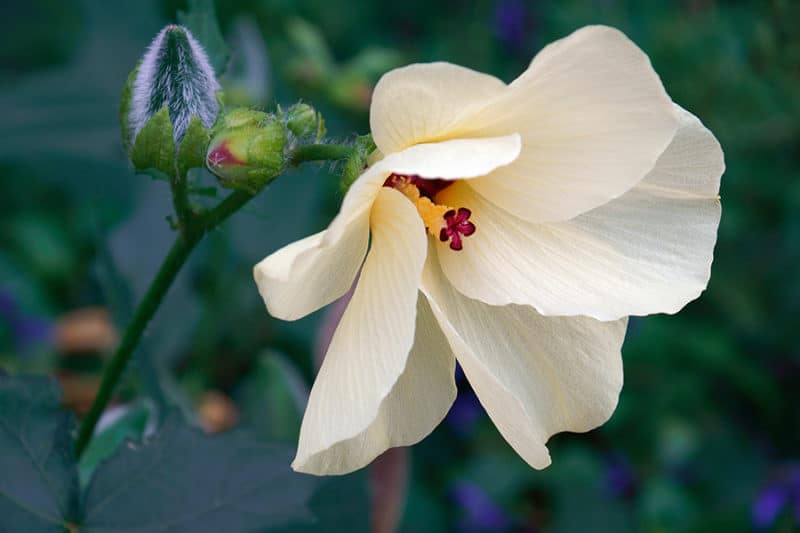
This variety can handle colder weather than some other types – down to zone 7. The leaves of this plant are obviously edible, and they come in a variety of shapes, from long and slender to round and wide.
Hibiscus Plant Notes
Being a tropical mainstay, it won’t come as a surprise that hibiscus loves tropical, subtropical and temperate climates. Hibiscus are part of the mallow family, which also includes okra and cotton. If you’re going to grow your own, here’s what you need to know:
- Zones: 8-11
- Sun: Plant in full sun with partial shade in the hottest part of the day.
- Soil: Plant in rich, well-draining soil with a pH of between 5.8 and 7.5. Feed the soil well with well-rotted organic matter before planting.
- Water: Water hibiscus well. Its a native to swamplands so does well with frequent deep water. It tolerates a little dryness, but not for too long.
Planting Hibiscus
When to Plant Hibiscus
Plant seeds or keep seedlings inside until spring weather warms up. Temperate environments that maintain consistent warm temperatures are suitable, but you may need to plant in containers and move them occasionally to capture the sun. You’ll also need to move them inside when the temperatures cool.
You can plant in early summer, just make sure your soil isn’t compact, and you keep the soil well watered – especially in the first three months. In warmer climates, hibiscus is a perennial. Grow it as an annual in cooler areas.
Planting Seeds
Hibiscus seeds are hard, so it’s best to scarify them prior to planting. Rub the seed gently on fine sandpaper and soak them in water overnight.
Plant in good quality seed raising mix in pots and keep the mix moist until the plant pushes through the surface. Keep the seeds and plants inside to maintain a consistently warm temperature.
Transfer outside to the garden once the plant is 4-5 inches high and the risk of frost is well past. The outside temperature should not dip below 40°F.
Propagate Hibiscus From a Cutting
This is my preferred method because propagating from a cutting of hibiscus produces an exact replica of the mother plant. Take the cutting from softwood or new growth. Softwood is immature and has a green tinge and is more pliable.
Trim the cutting to just below the node or bump in the cutting. Take off all leaves except the top two. Dip in root hormone and plant in good quality seed raising mix. Keep moist at all times. Repot once the roots take and you see growth in the cutting.
Container Growing
You may prefer your hibiscus in a container for aesthetics, space limitations or temperature requirements. Regardless, it does well in containers.
Find a good size container no smaller than 5 gallons and at least 12 inches deep. Use a good quality potting mix with sustained-release fertilizer.
Place the container in a sunny, warm spot. Don’t allow the container to dry out.
Caring for Edible Hibiscus
I mulch hibiscus with peat, hay or straw. This is to retain moisture as I live in a dry environment in the summer and I want to keep the soil moist. I also like to deadhead my hibiscus. It’s as simple as pinching off the wilted and dying blooms to allow the plant to concentrate on producing fresh new flowers.
A flowering hibiscus needs plenty of feeding. Use a well-balanced fertilizer once a month. Prune for shape and to remove diseased parts of the plant. Hibiscus have terminal flowers which means the blossoms grow at the end of the branch. Pruning hibiscus encourages more branching and the flowers to keep growing.
Common Pests and Diseases
While growing edible hibiscus is relatively problem-free you do need to watch for a few things.
- Leaf Drop: This may happen when you first transplant your hibiscus. Over time it will regain its vigor. Hibiscus also drops its leaves and possibly its blooms if it hasn’t been fed enough, so your first option should be to feed and water well.
- Scale: Scale look exactly as the name implies: like scales stuck firm to your hibiscus plant. These little bugs suck the sap of your plants and leave honeydew which attracts ants. Use neem oil.
- Aphids: Another sap-sucking pest that can be treated with neem oil.
- White Fly: Gnat sized bugs that attack the undersides of leaves to suck the sap. Once again, use neem oil.
- Thrips: This is one pest to control as soon as you see them because thrips lay eggs inside the hibiscus bud causing it to drop off the plant. Use neem oil.
Harvesting Hibiscus
Most edible hibiscus plants have multiple edible parts, including the blossoms, calyx, and leaves. Just make sure to know which parts of your plant can be eaten.
Harvesting the Calyx
Hibiscus flowers when temperatures are between 60 and 90°F. The blossoms are big, colorful, and showy, and generally stay open for just a day or two. Once they die off, the calyx begins to form and they’ll be ready to harvest in 3-7 days.
Try to harvest the calyx as soon as it’s ripe because they become woody. Young calyces break off the plant easily, while fully ripe ones need to be snipped off with a knife or scissors.
Inside the calyx is a seed pod that you don’t want to eat. Slit the pod open with a sharp knife and pop out the seed pod. Now the calyx is ready to be used to dry for tea or fresh in whatever recipe you’re making.
Harvesting Seeds
If you want to harvest the seeds from your hibiscus plant, leave the calyx on and the pod inside continues to develop seeds, which are easy to extract when you cut the calyx and seed pod open.
Harvesting Leaves
If you use the edible leaves, harvest the young, fresh ones to maximize the lemony flavor. Older leaves tend to be bitter.
Hibiscus Recipes
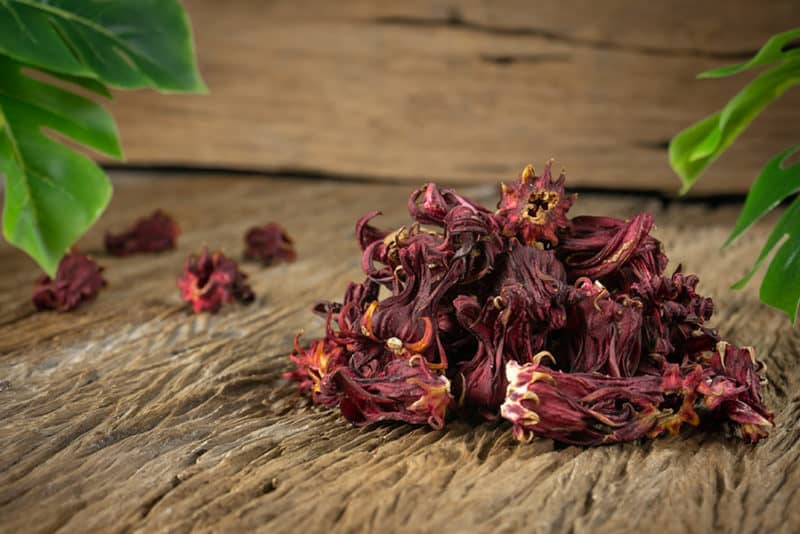
If you’ve ever had a commercial hibiscus tea, you were drinking the dried calyx of Hibiscus sabdariffa, but you can use the fruits, leaves, and blossoms from any edible hibiscus. The flavor is something like cranberry and lemon blended together.
Try making:
- Strawberry hibiscus jam
- Hibiscus enchiladas
- Hibiscus quesadillas
- Hibiscus salsa
- Hibiscus “cranberry” sauce
You can dry any part of the plant and store it for up to two years in an air-tight container. Use the fresh calyces within 2 days.
Making Hibiscus Tea
Take 3 dried or fresh calyces and pour a cup of nearly boiling water over them. You can also blend in some blossoms and leaves in your tea. Let it steep for about five minutes. The water should be bright pink. You can store the dried calyx for up to two years.
The Last Word on Edible Hibiscus
Lots of people have no idea when they’re looking at the big, splashy flowers of the hibiscus that there’s so much more to the plant than just its looks. Hibiscus taste amazing, and the prolific plants will keep reproducing as long as you want.
Let us know how you like to eat your hibiscus in the comments so other people can try out your recipes.
